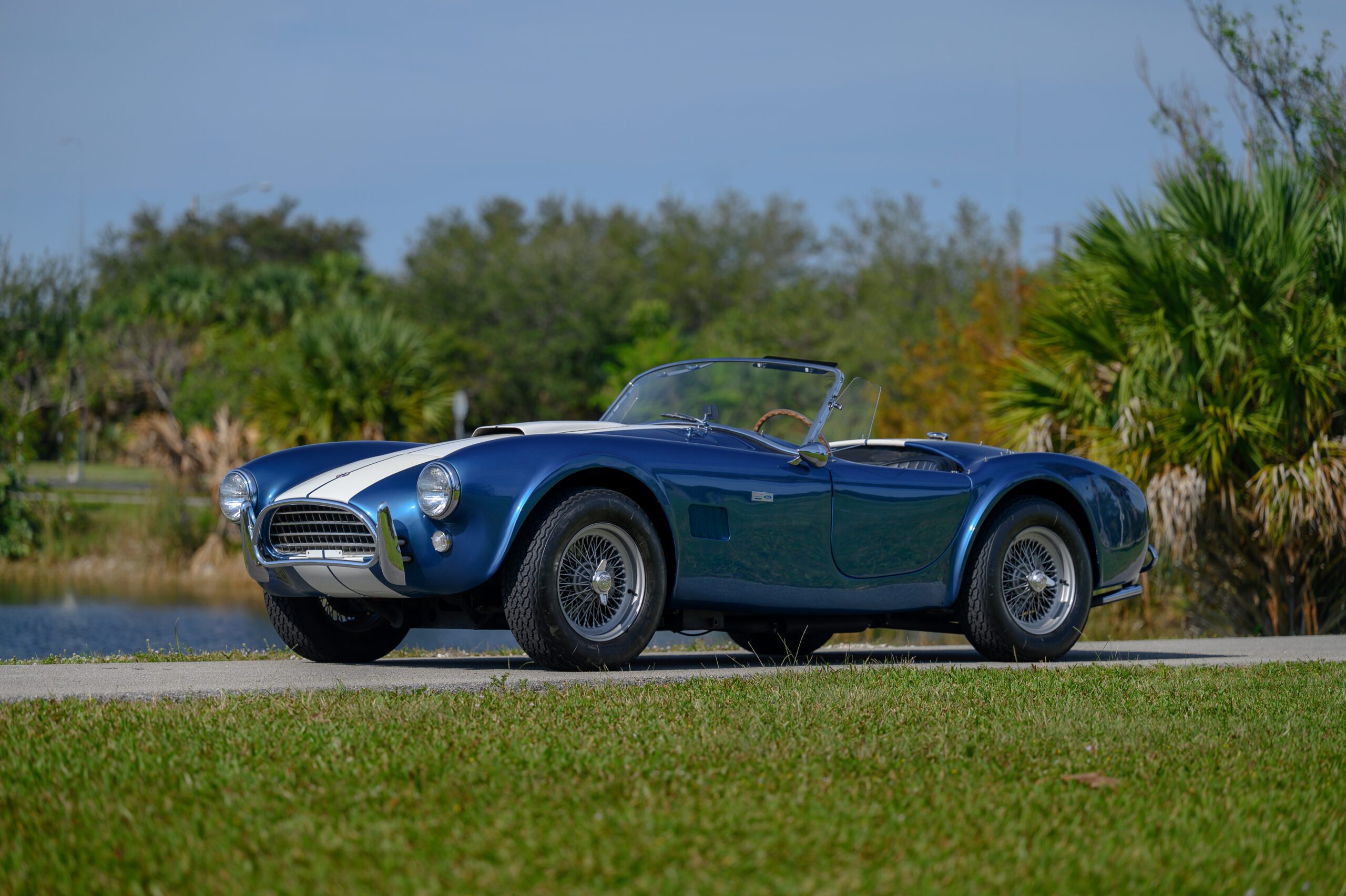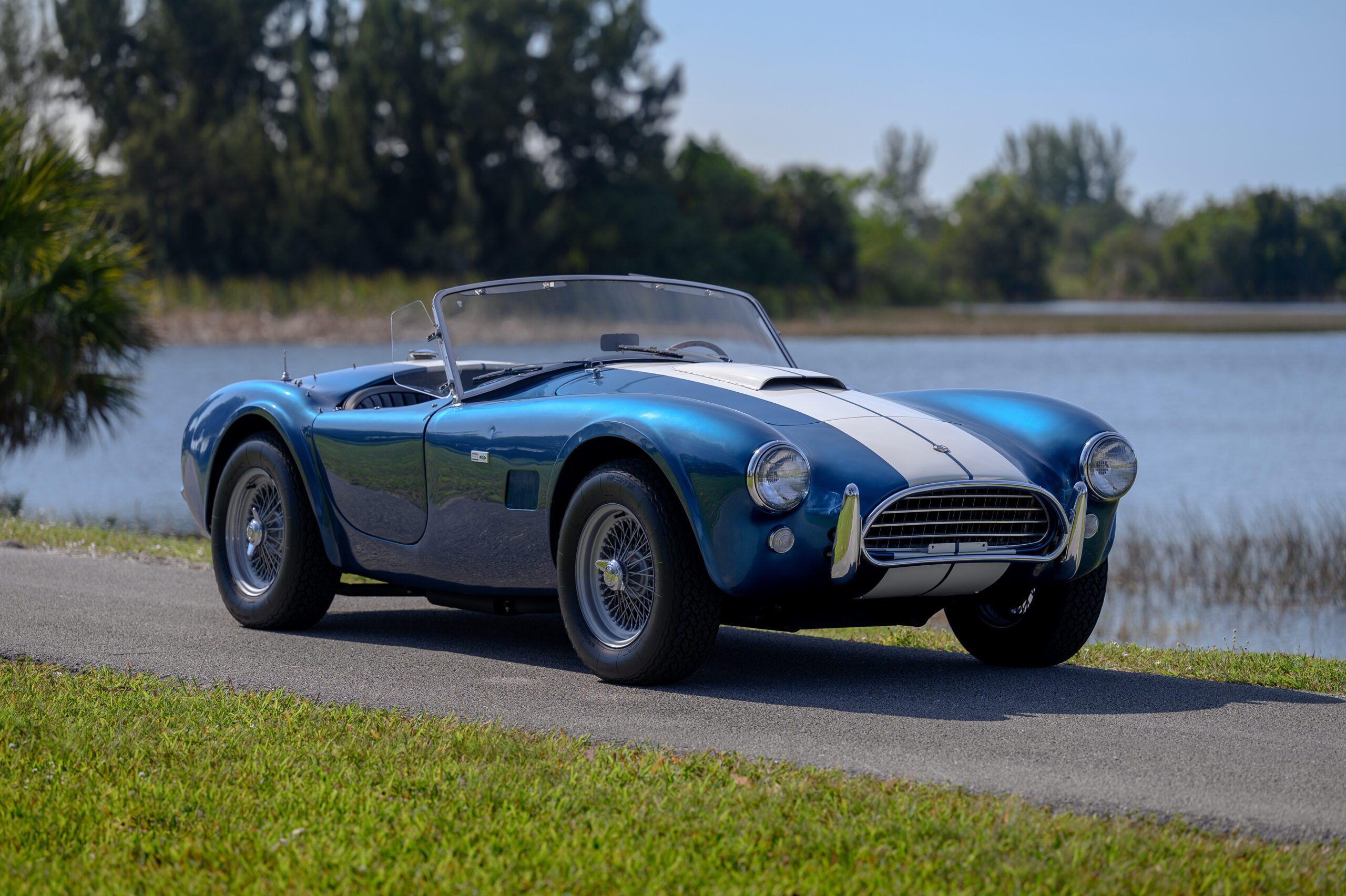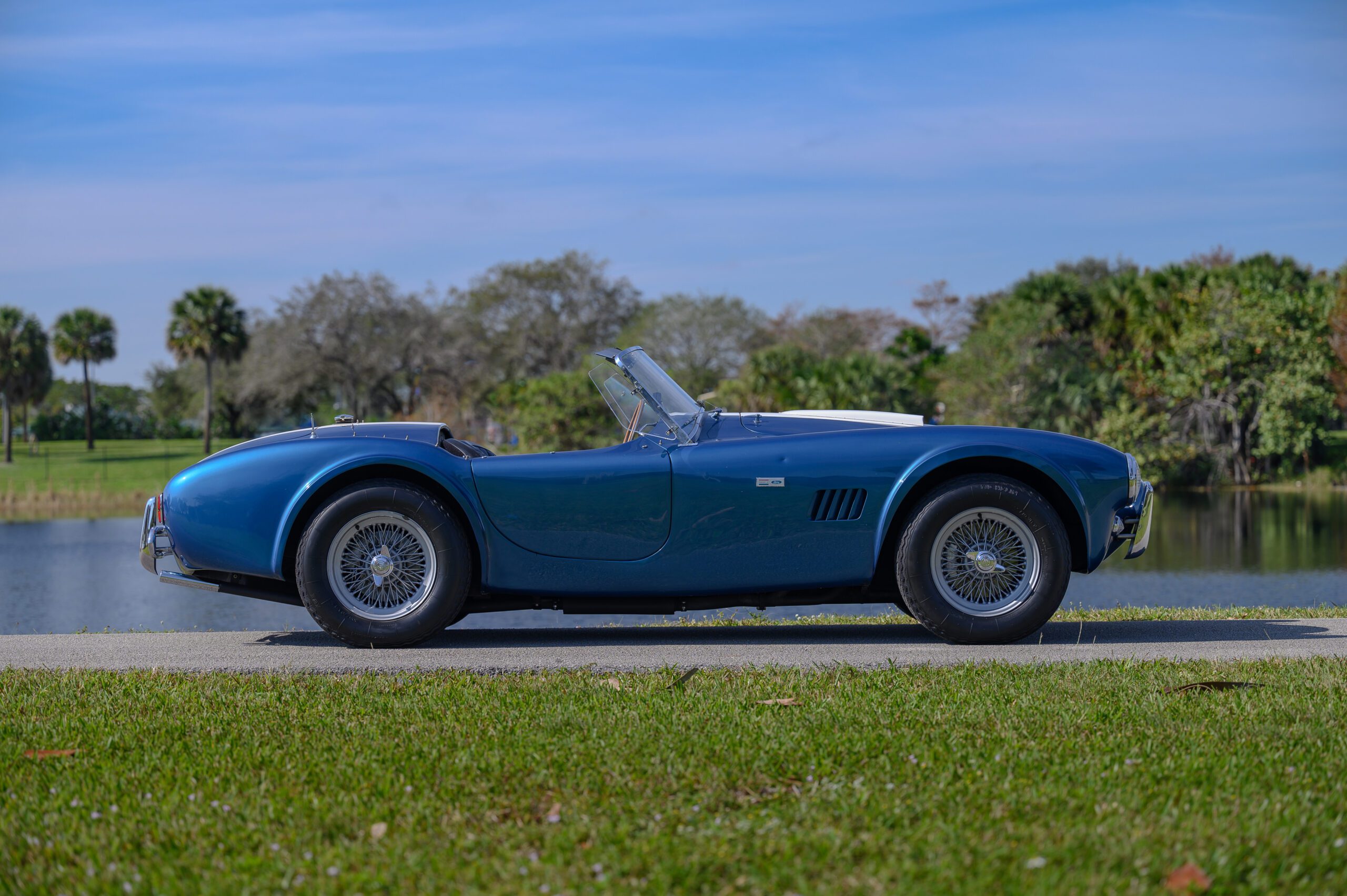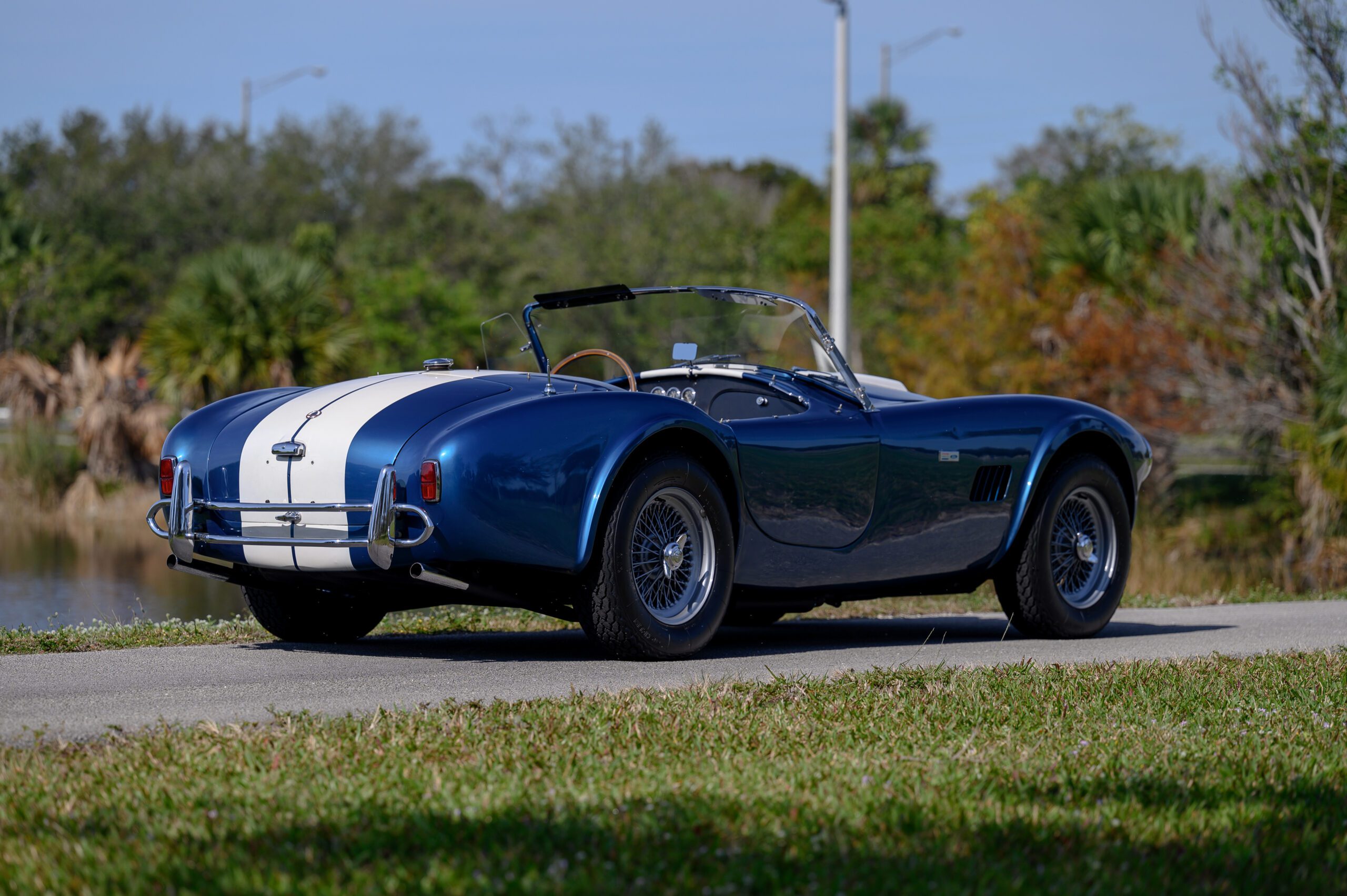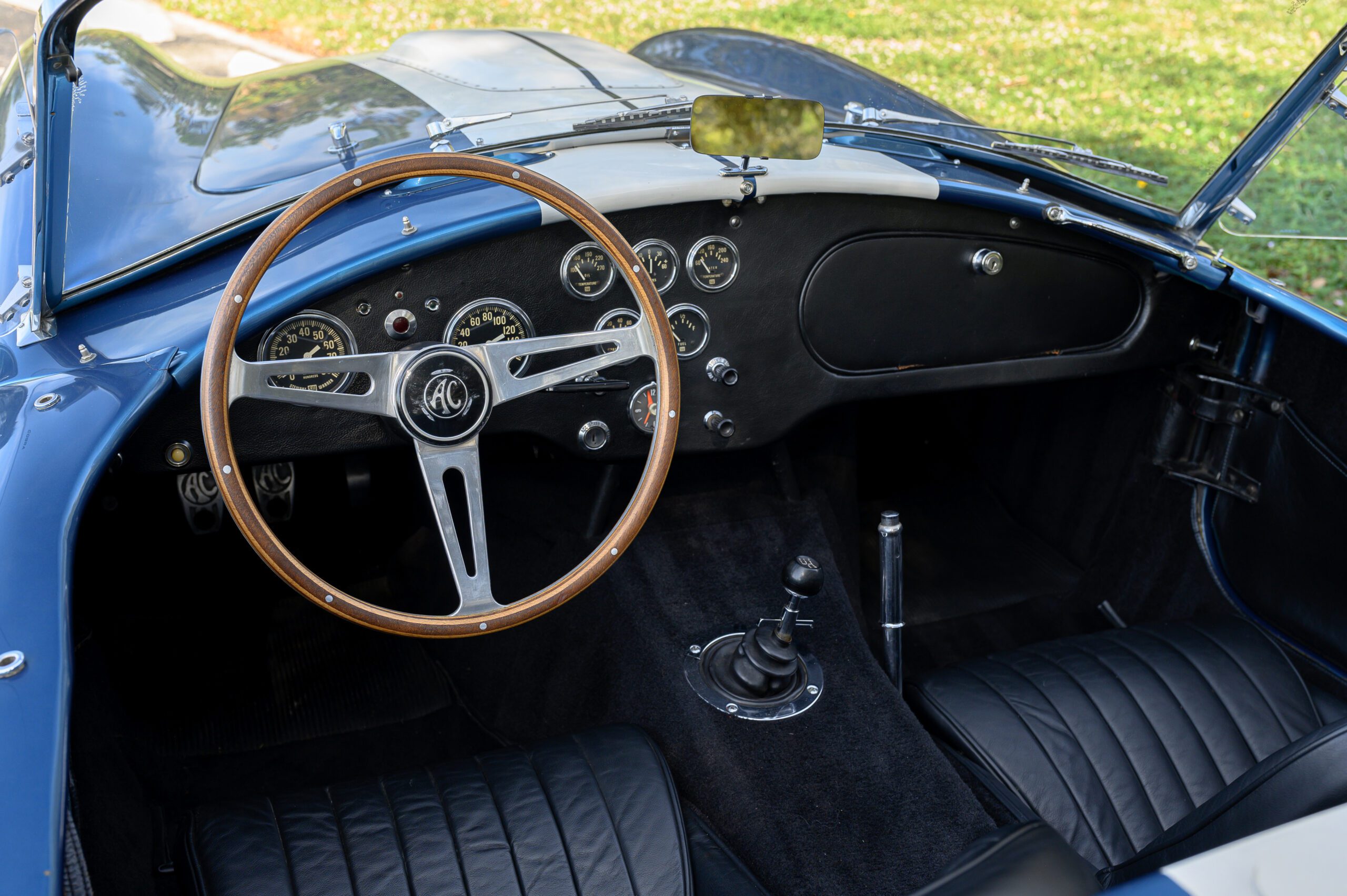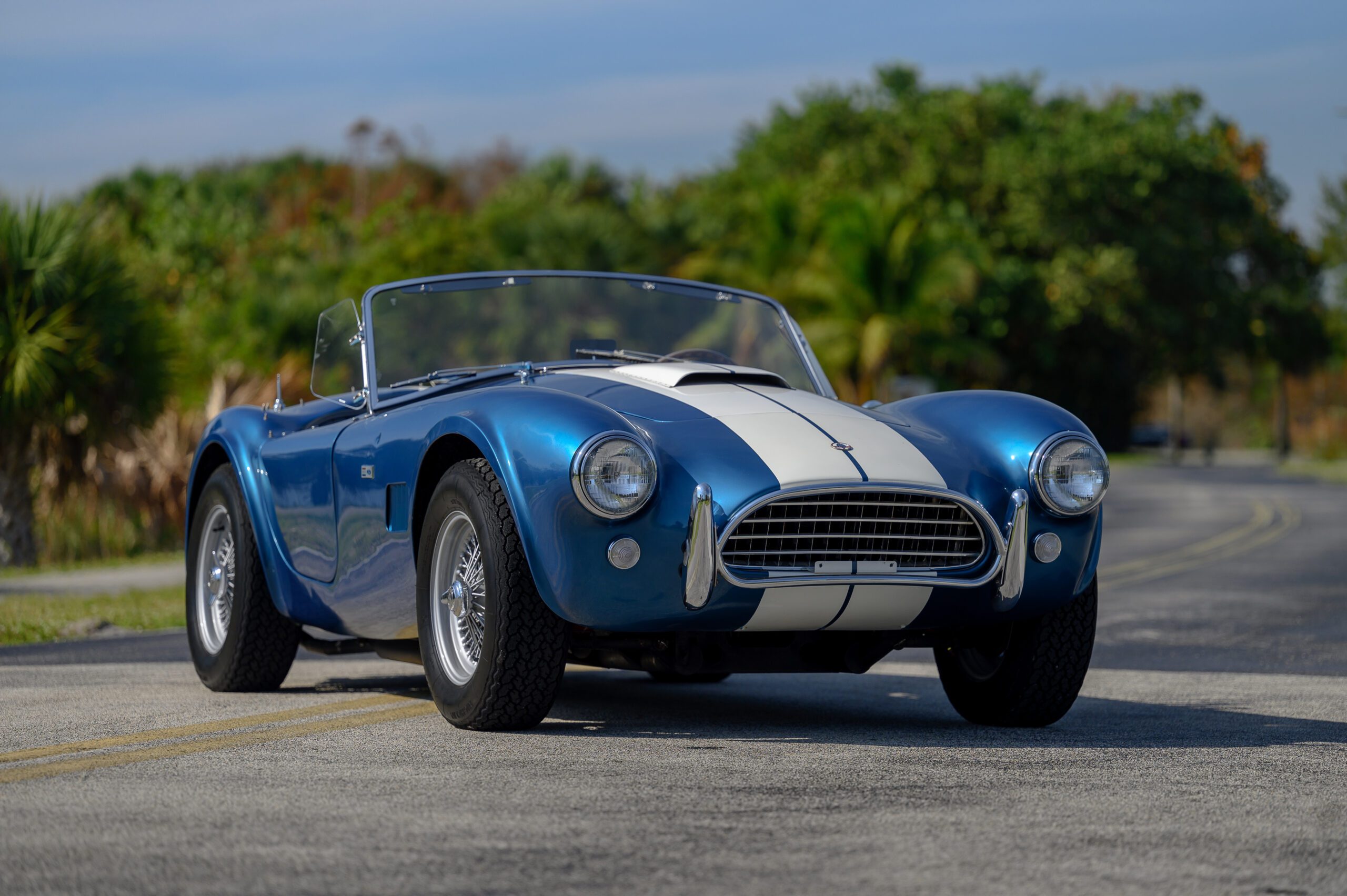A.C. Cars, Ltd., a distinguished British automaker tracing its roots back to 1908, transitioned from producing small delivery vehicles to crafting sports cars in the 1920s. After World War II, they briefly diverted to manufacturing invalid cars before introducing the Ace in 1954—a revolutionary tube-frame car with advanced independent suspension designed by John Tojeiro. A.C. integrated engines from Bristol and Ford of England alongside their own.
Carroll Shelby, a former chicken farmer turned racing driver, proposed fitting American V8 engines into A.C.’s Ace chassis after Chevrolet rejected him, possibly due to concerns about competition. A.C.’s interest piqued, particularly when Shelby introduced Ford’s new small block V8, leading to a collaboration. The initial Cobra prototypes, including CSX2000, were sent to the United States for assembly, utilizing Ford’s high-performance engines. Upgrades like the Salisbury differential and rack-and-pinion steering were integrated, enhancing performance and handling.
Production of the Cobra steadily increased through 1962, with the first competition model showcasing its potential against Corvettes. A.C.’s chief engineer, Alan Turner, refined the chassis for improved steering, culminating in the introduction of CSX2126 in early 1963. Revered as a classic sports car, the Shelby Cobra holds an esteemed status as one of the most iconic and sought-after automobiles in history.
Photo Source: RM Sotheby’s





